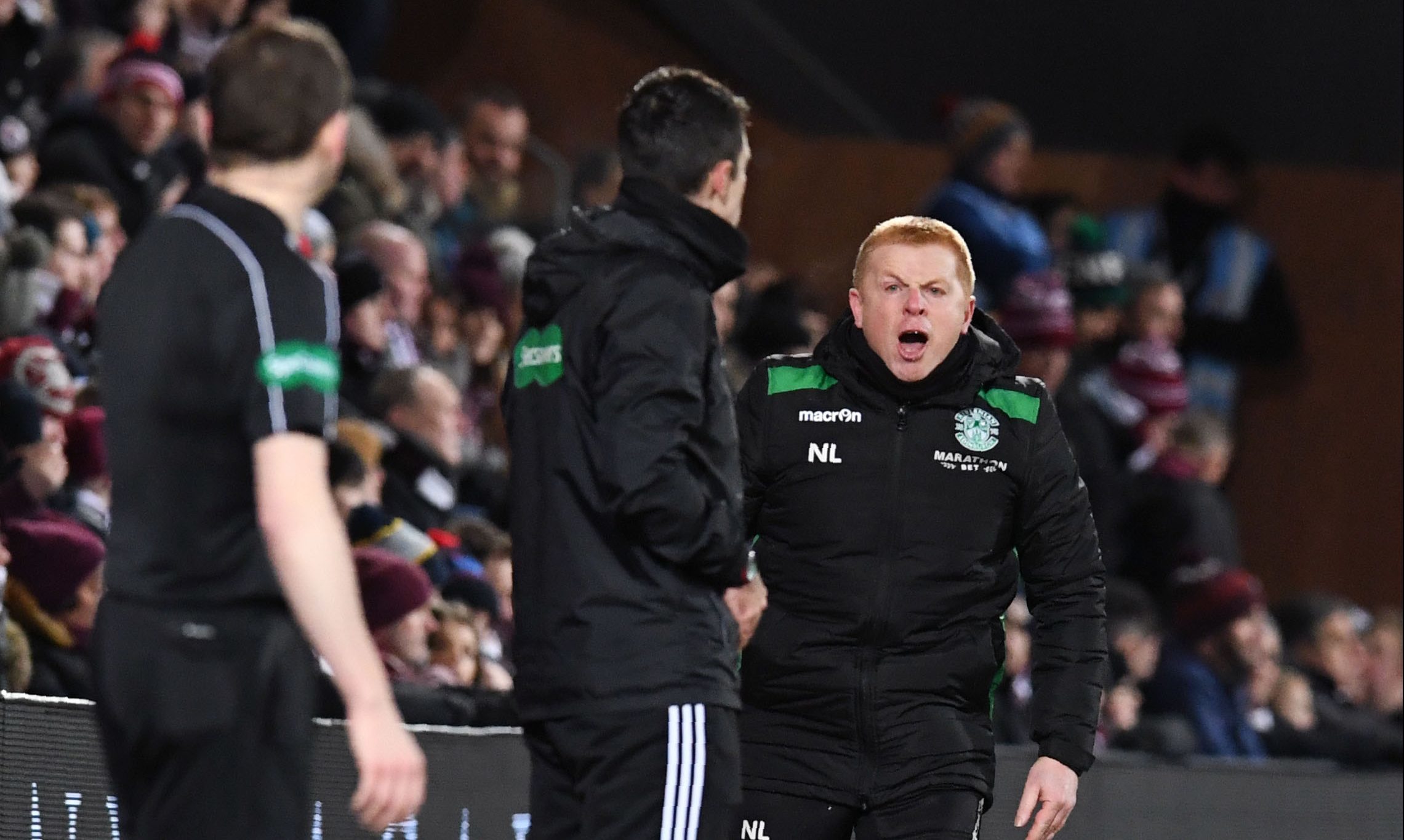
IT is hard to think of anything that makes the Scottish game look more of a laughing stock than the carry-on we had in the Edinburgh derby.
Hibs scored. But because the officials missed the ball crossing the line and there’s no goal-line technology, it wasn’t given.
That left every single person watching on television to wonder how it can be that they know within a couple of seconds what has happened, yet the referee – in this instance Steven McLean – is left absolutely clueless.
Hibs striker Oli Shaw was robbed of what would have been the winning goal, and his manager, Neil Lennon, was driven to the verge of distraction.
If the cameras are there covering the match for a broadcaster anyway, surely the answer has to be to allow them to also be used to help out in these instances.
The contrast between what happens in Scotland, and in other countries, could not be more pronounced.
We have become accustomed to getting the right decision in such cases in English Premier League games, thanks to the use of goal- line technology.
And on the same night as the Edinburgh derby, those who flipped channels to the Milan derby saw a goal disallowed in the Coppa Italia quarter-finals for offside through the use of video replay (VAR).
The SPFL has responded to criticism of what happened at Tynecastle by insisting goal-line technology is too expensive for Scottish football.
It didn’t have to be this way.
Back in 2009, I was ready to suggest to the SFA that we buy the prototype which was around at the time for all our top-flight clubs.
That is how reasonable the sysyem was back then.
Unfortunately, the vote to change the rules involving FIFA and each of the four home nations went against me.
The chance was gone – and the company pushing the cameras went bust.
I thought it was a bad decision, and wasn’t shy about saying so at the meeting, much to the displeasure of Jerome Valcke, the FIFA secretary general of the time.
He said to me: “You have to realise, Gordon, that this proposal is only for the highest level of the game. You can’t make changes like this unless it covers every level.”
I replied: “Well, I am going to miss floodlights, then, because that is one technology which is not in use right through the game.’
We get versions of Valcke’s argument even now, and it still makes no sense to me.
People complain it wouldn’t be right to use technology in one top-flight televised match, while all the rest of the fixtures just come down to the eye of the officials.
The best analogy I can think of here involves speed cameras.
We can’t afford to have them on every road, but they are deployed where they are most needed.
Would anybody argue they don’t make a positive contribution to road safety?
While football matches are not as serious an issue, surely as a country we want to showcase our best club games?
To have them decided as fairly as possible and, just as importantly in the modern world, have them seen to be decided as fairly as possible.
Sports lovers see technology used in tennis, cricket, rugby league, rugby union – you name it – on their big screens.
There are those who argue that controversy – and the Hibs goal not being given was certainly controversial – is part of the lifeblood of the game.
I think that seriously underestimates the desire of a football fan to see justice done on the pitch.
Remember the outcry when Thierry Henry’s handball goal robbed the Republic of Ireland of a place in the 2010 World Cup?
The authorities may resist change – but it is coming, make no mistake about that.
The television audience demands it. And what they want, they generally get.

Enjoy the convenience of having The Sunday Post delivered as a digital ePaper straight to your smartphone, tablet or computer.
Subscribe for only £5.49 a month and enjoy all the benefits of the printed paper as a digital replica.
Subscribe